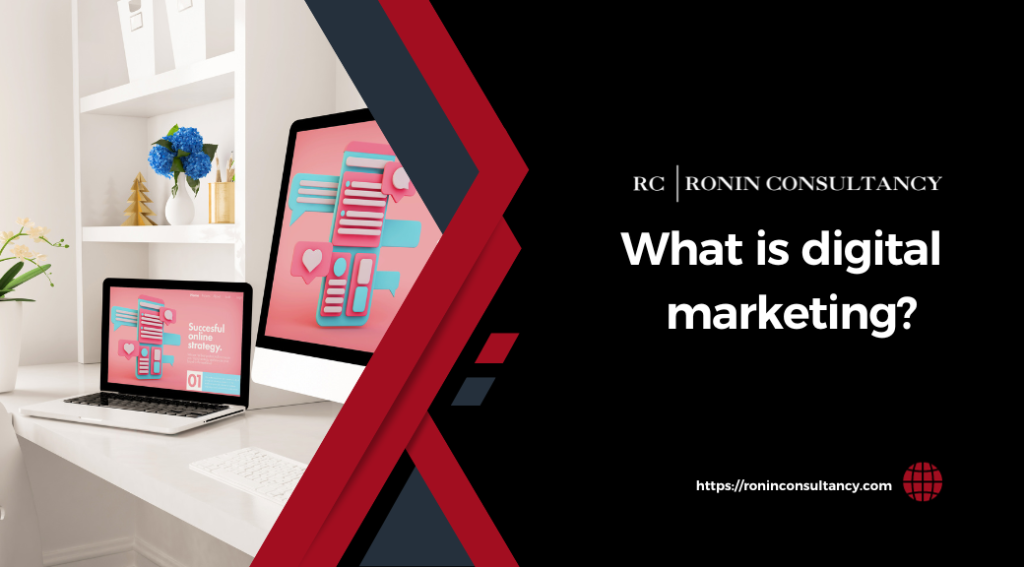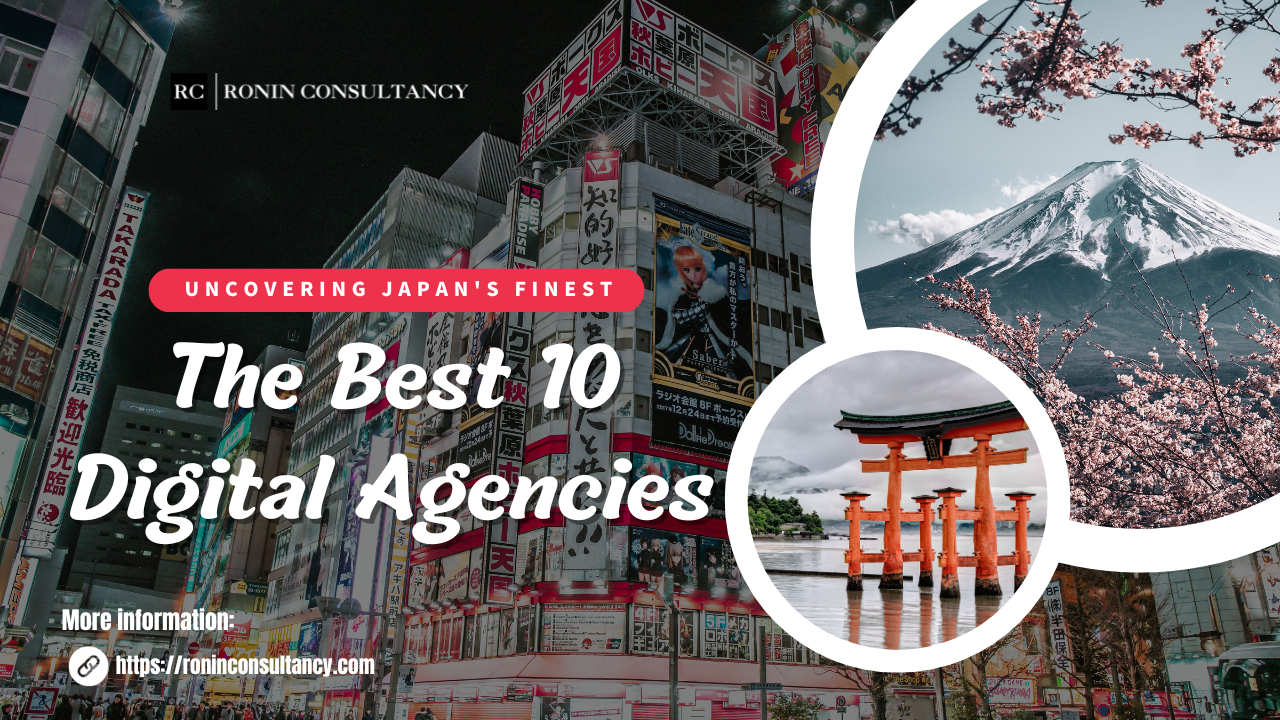In today’s digital age, the concept of marketing has evolved significantly. Digital marketing encompasses a broad range of strategies and techniques used to promote products, services, or brands through digital channels.
In this article, Ronin Consultancy will delve into the world of digital marketing, exploring its intricacies, strategies, and key performance indicators (KPIs).
I. What is the Digital Marketing?
The term digital marketing refers to the use of digital channels to market products and services to consumers. This type of marketing involves the use of websites, mobile devices, social media, search engines, and other similar channels. Digital marketing became popular with the advent of the Internet in the 1990s.
Digital marketing involves some of the same principles as traditional marketing and is often considered an additional way for companies to approach consumers and understand their behaviour. Companies often combine traditional and digital marketing techniques in their strategies. But digital marketing comes with its own set of challenges, including implicit bias.
II. Top SEO On-page Checklist
Digital marketing involves leveraging various online platforms and tools to reach a target audience effectively. It works by creating and delivering valuable content to attract, engage, and convert potential customers. Here’s an overview of how it operates:
- Website Marketing: A company’s website is often the cornerstone of its digital marketing efforts. It serves as a virtual storefront, providing information, products, and services to visitors.
- Pay-Per-Click Advertising (PPC): PPC campaigns allow businesses to display ads on search engines and websites. Advertisers pay a fee each time their ad is clicked, making it a cost-effective way to drive traffic.
- Content Marketing: Content is king in the digital marketing realm. This strategy involves creating and sharing valuable, relevant content to attract and engage a target audience.
- Email Marketing: Email remains a powerful tool for businesses to communicate with their audience. Email marketing campaigns deliver personalized messages, offers, and updates directly to subscribers’ inboxes.
- Social Media Marketing: With billions of users on social media platforms, businesses use these channels to connect with their audience, share content, and build brand awareness.
- Affiliate Marketing: In this model, businesses partner with affiliates who promote their products or services. Affiliates earn a commission for each sale or lead generated through their efforts.
- Video Marketing: Videos have become a dominant form of content online. Brands use video marketing to tell their story, demonstrate products, and engage with their audience on platforms like YouTube.
- SMS Messaging: Short Message Service (SMS) is used for direct communication with customers through text messages. It’s effective for sending promotions, reminders, and updates.
III.Key Performance Indicators (KPIs) in Digital Marketing
To measure the success of digital marketing campaigns, businesses rely on key performance indicators (KPIs). These metrics help assess the effectiveness of various strategies and determine the return on investment. Common KPIs include:
- Website Traffic: The number of visitors to a website is a fundamental metric. It indicates the reach and visibility of a brand online.
- Conversion Rate: This measures the percentage of website visitors who take a desired action, such as making a purchase or filling out a contact form.
- Click-Through Rate (CTR): In PPC advertising, CTR measures how often users click on an ad. A higher CTR indicates ad effectiveness.
- Social Media Engagement: Engagement metrics on social platforms include likes, shares, comments, and follows, reflecting audience interaction.
- Email Open Rate: This measures the percentage of email recipients who open an email campaign, indicating its relevance and appeal.
- ROI (Return on Investment): ROI assesses the profitability of digital marketing efforts by comparing the cost of campaigns to the revenue generated.
- Bounce Rate: A high bounce rate indicates that visitors leave a website quickly, suggesting a need for improvements in content or the user experience.
- Customer Acquisition Cost (CAC): CAC calculates the cost of acquiring a new customer, helping businesses optimize their marketing spend.
- Churn Rate: In subscription-based models, the churn rate measures the rate at which customers cancel their subscriptions.
In conclusion, understanding the essence of digital marketing is akin to recognizing the heartbeat of modern business growth. In today’s rapidly evolving landscape, digital marketing is more than just a strategy; it’s the catalyst that propels businesses forward. It seamlessly intertwines creativity, data analytics, and strategic thinking to not only connect with audiences but to forge lasting relationships. By leveraging the power of digital platforms and employing a well-crafted digital marketing strategy, businesses can unlock remarkable potential and reach heights they might not have deemed possible.
As we navigate this digital frontier, it’s crucial to partner with a seasoned ally who understands the dynamics of this vast digital landscape. Ronin Consultancy is here to guide you on this transformative journey. We specialize in crafting bespoke digital marketing strategies that align with your unique business goals, ensuring your brand stands out amidst the digital noise. Together, let’s harness the power of digital marketing and pave the way to unprecedented success.
Reach out to Ronin Consultancy today to embrace a future of growth, innovation, and unparalleled digital visibility. Your success story begins with the right digital marketing strategy. Let’s script it together.

Contact Ronin Consultancy today, and let’s elevate your marketing strategy to new heights!



